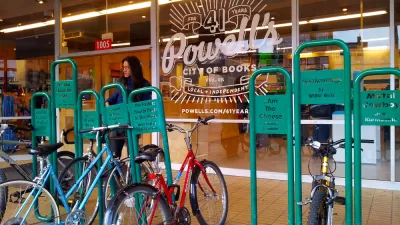A recent law prohibits ‘defensive’ architecture designed to keep people away from buildings or public spaces.

It’s been one year since Brazil passed a law banning “hostile architecture,” infrastructure designed to prevent people from sitting or lying in public spaces. Hostile architecture is widely used around the world to limit access for people deemed ‘undesirable,’ explains Raphael Tsavkko Garcia explains in Next City.
The decree stipulates measures to curb the use of hostile materials, structures, equipment and construction techniques in open spaces for public use. It also requires urban planning tools and policies, such as zoning regulations and building codes, to help prevent the use of hostile architectural elements.
However, some cities have been slow to implement the law, and experts say hostile architecture or “defensive design” is part of a broader social problem. “Architects Elenara Stein Leitão, Oscar Muller and Vinicius Gonçalves tell Next City that hostile architecture is just one facet of ‘a society that focuses on security, often the fruit of social exclusion, in which it would be possible to differentiate into two strands: the security of those who own property and the expulsion of the undesirables.’”
FULL STORY: One Year Ago, Brazil Banned Hostile Architecture. Easier Said Than Done.

Alabama: Trump Terminates Settlements for Black Communities Harmed By Raw Sewage
Trump deemed the landmark civil rights agreement “illegal DEI and environmental justice policy.”

Planetizen Federal Action Tracker
A weekly monitor of how Trump’s orders and actions are impacting planners and planning in America.

The 120 Year Old Tiny Home Villages That Sheltered San Francisco’s Earthquake Refugees
More than a century ago, San Francisco mobilized to house thousands of residents displaced by the 1906 earthquake. Could their strategy offer a model for the present?

In Both Crashes and Crime, Public Transportation is Far Safer than Driving
Contrary to popular assumptions, public transportation has far lower crash and crime rates than automobile travel. For safer communities, improve and encourage transit travel.

Report: Zoning Reforms Should Complement Nashville’s Ambitious Transit Plan
Without reform, restrictive zoning codes will limit the impact of the city’s planned transit expansion and could exclude some of the residents who depend on transit the most.

Judge Orders Release of Frozen IRA, IIJA Funding
The decision is a victory for environmental groups who charged that freezing funds for critical infrastructure and disaster response programs caused “real and irreparable harm” to communities.
Urban Design for Planners 1: Software Tools
This six-course series explores essential urban design concepts using open source software and equips planners with the tools they need to participate fully in the urban design process.
Planning for Universal Design
Learn the tools for implementing Universal Design in planning regulations.
Clanton & Associates, Inc.
Jessamine County Fiscal Court
Institute for Housing and Urban Development Studies (IHS)
City of Grandview
Harvard GSD Executive Education
Toledo-Lucas County Plan Commissions
Salt Lake City
NYU Wagner Graduate School of Public Service




























